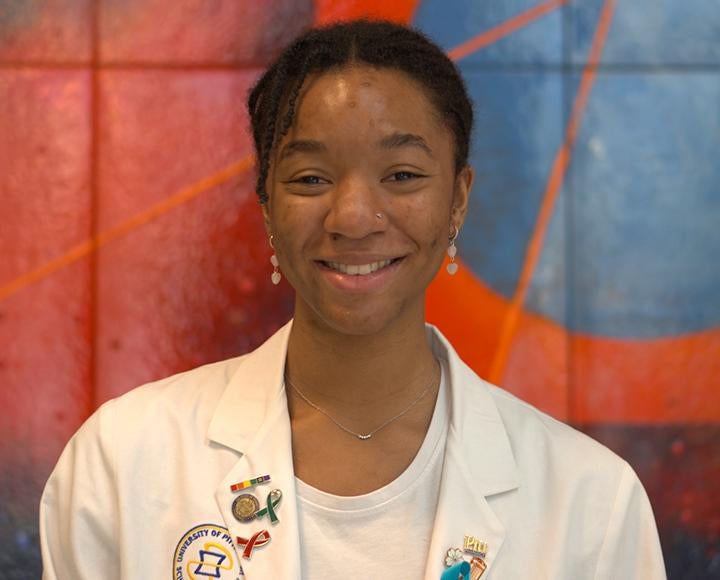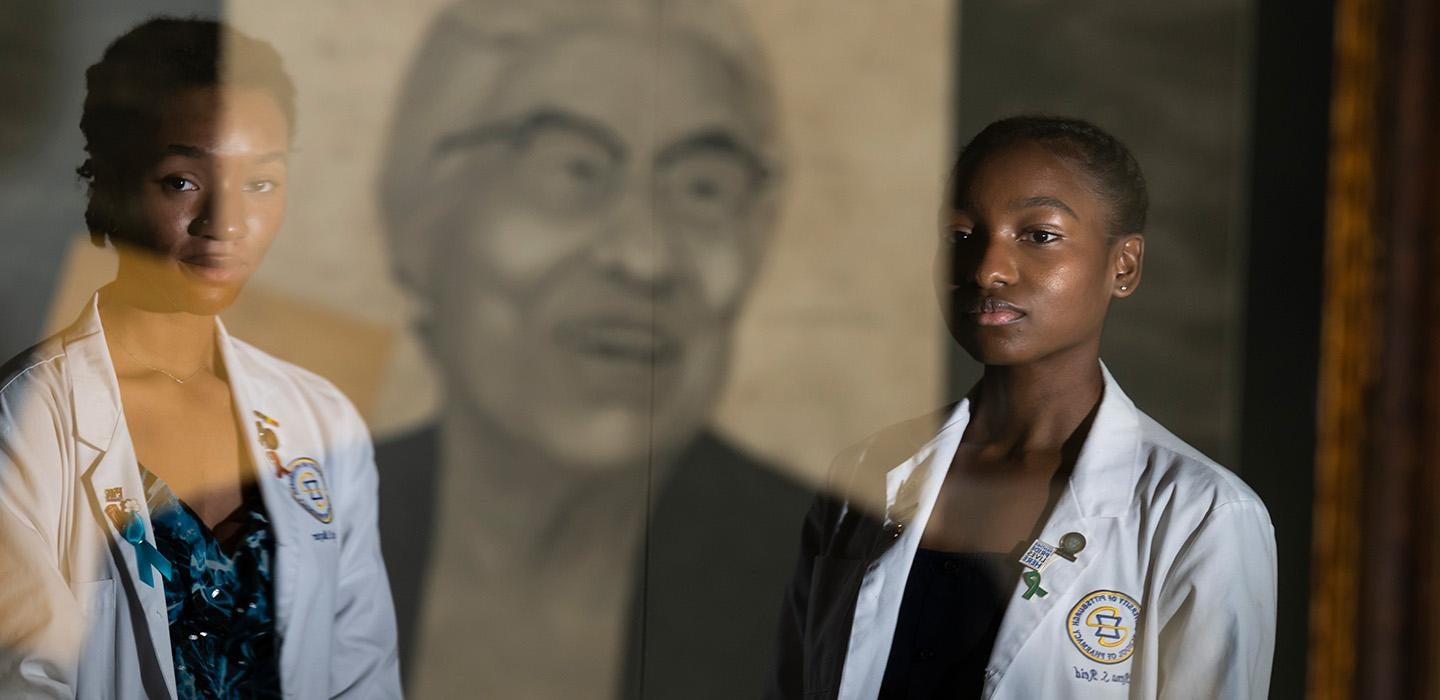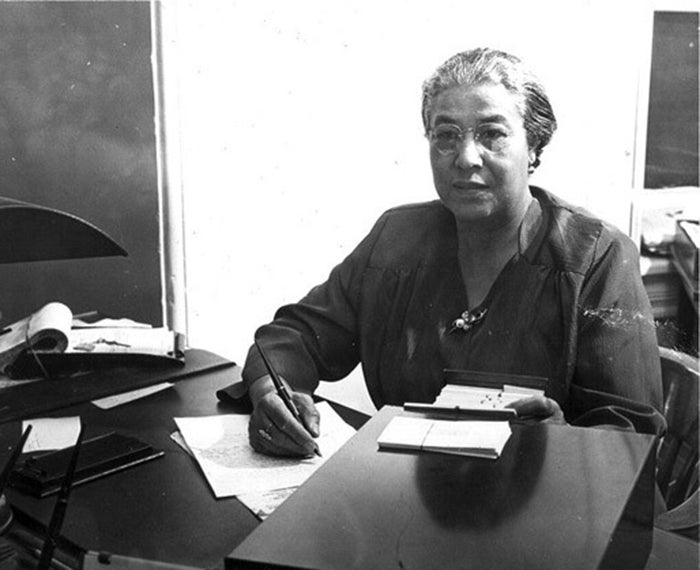
Subscribe to Pittwire Today
Get the most interesting and important stories from the University of Pittsburgh.This story was updated in March 2024.
Doctoral pharmacy students Hailey Baxter and Rena Reid are on a mission to honor a trailblazer from University of Pittsburgh history: Ella P. Stewart, the first Black woman to earn a degree from the School of Pharmacy.
Their journey began in 2020, when Reid stumbled upon Stewart’s story on Instagram.
“I follow several Black pharmacist pages to get inspired by what Black people are doing within pharmacy and saw one post about ‘Ella from the University of Pittsburgh,’” recalled Reid, a native Jamaican who is concentrating on global health. Yet she’d never heard Stewart’s name. She texted her classmate Baxter immediately.
As they sought to learn more, they found out that, after initial rejection, Stewart was admitted to the University in 1914. She graduated with high marks in 1916 and went on to become Pennsylvania’s first Black woman to practice pharmacy and one of the first in the U.S.
Inspired, Baxter and Reid, who both earned their bachelor’s degrees from Pitt in 2022, launched an initiative to ensure Pitt’s proper recognition of the pioneer. That plan came to fruition March 21, when the University commemorated Stewart with the unveiling of a portrait by local artist Douglas J. Webster and name a conference room on the fifth floor of Salk Hall in her honor.
“You hear about great alums like the previous CEO of CVS [Larry J. Merlo] and people who own some of the most successful specialty pharmacies, but you never hear that the first African American female pharmacist graduated from this school,” said Baxter, who aims to practice in underserved rural communities. “How do we not know this history?
Stewart’s remarkable life
Stewart (known as Phillips Myers while enrolled) lived a purpose-filled life. She established a drugstore in Pittsburgh before marrying fellow Pitt pharmacy graduate William Stewart (PHARM 1916) in 1920. After moving to Ohio, she became the first Black pharmacist and employee to work at Youngstown City Hospital. She and her husband then opened Toledo’s first Black-owned and operated drugstore.
Stewart held many prestigious positions, including president of the Ohio Association of Colored Women; member of a U.S. Department of Labor Women’s Advisory Committee; executive board member of the United Nations Educational, Scientific and Cultural Organization and more.
A Pitt biological sciences award and a school in Ohio are named after the civic leader and social activist who died in 1987.


Present-day perseverance
As Black women following in Stewart’s footsteps, Reid and Baxter felt called to amplify her story, as well as their own.
Reid, a member of Pitt pharmacy’s diversity, equity and inclusion committee, used an invitation to write for a school newsletter to share Stewart’s accomplishments and her personal thoughts on Black women’s erasure from history. Her words struck a chord with dean emeritus and distinguished service professor Patricia D. Kroboth (PHARM ’80G, ’83G), who initiated conversations between Baxter, Reid and the school’s associate dean for equity, engagement and justice, Mario Browne (SPH ’05G).
“Two students found Ella’s story and questioned why she was not front and center in the school’s history,” said Browne. “It’s vital to recognize we have struggled with our diversity efforts within the school and the field of pharmacy and honor those who have gone unnoticed despite doing amazing things in our country. It’s incumbent upon us to tell the whole story, uncover truths and amplify stories so those coming behind — students, young people — can see themselves, catch a glimpse of their greatness and strive.”
The group’s discussions focused on researching Stewart and ensuring their actions weren’t performative. The latter was a concern for both students based on personal experiences, which Baxter said, to an extent, likely resembled discrimination Stewart faced while a student.
“There’s not many Black faculty, so it’s hard to express your worries or fears about what it means to both be Black and in pharmacy; what it means to attend to patients and look like them and have that connection where there’s more or less trust because you’re Black,” Baxter said.
These obstacles have only persuaded the pair to continue on their course in the hopes that hearing about Stewart will inspire future students the same way it inspired them.
“It matters to know there were people here who looked like you,” Baxter said.
“I’m excited for those after us to enter that room and know her presence and legacy are not forgotten,” said Reid. “It’s important for students to investigate these things and push for their identities, to make spaces more inclusive. I hope this does put the wheels in motion. I don’t want it to end with Black woman representation.”
— Kara Henderson, photography by Aimee Obidzinski



